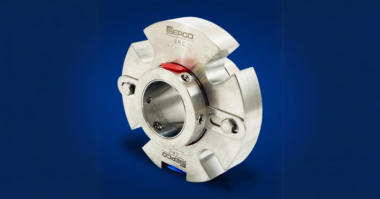Vacuum process technology plays a critical role in many manufacturing operations. While use cases like suction gripping and scientific research may be the most familiar, these are far from the only ways companies use this technology.
As advanced vacuum systems improve, they provide a wider range of services — including those in industries some may not expect. Simultaneously, demand from these newer applications drives further innovation in vacuum technology. Here are five of the most exciting and unique sectors driving these advancements today.
1. Semiconductor Manufacturing
Despite solid-state electronics largely replacing vacuum tubes in modern electronics, vacuum process technology is still crucial to electronics manufacturing. More specifically, semiconductor producers need vacuums to ensure a safe and effective fabrication process.
To create insulating silicon dioxide layers, semiconductor fabs must keep oxidation environments near atmospheric pressure or above it for thicker layers. They must also hold other reactive gases and moisture out of these environments, requiring a tight seal. Consequently, they need highly precise, controllable vacuum systems to maintain ideal pressure and prevent leakage.
2. Alternative Energy
Alternative energy like semiconductors is another industry seeing rapid growth today where advanced vacuum systems show significant promise. Vacuum deposition — a process similar tosilicon oxidation — lets solar panel manufacturers use more efficient materials while minimizing production costs. The resulting solar cells can reach 16.1% efficiency — the highest recorded for a Perovskite cell.
Vacuum systems are also essential for nuclear fusion, which produces carbon-free power. While fusion happens naturally on the sun, it requires extreme pressures that are only possible on Earth with industrial-grade vacuums.
3. Space Travel
Representing sun-level atmospheric pressure is useful outside of alternative energy, too. As the idea of public space travel takes off, vacuum process technology will see rising demand to test systems intended for use in the vacuum of the universe.
Newer vacuum pumps can produce up to 200 horsepower, offering sufficient suction power to test space flight materials without actually sending them to space. Simulating these environments requires extreme pressures and highly reliable seals to prevent leaks. As the second space race heats up, vacuum technology will advance alongside it.
4. Health Care
Health care is another industry many people may not associate with advanced vacuum systems. Despite this preconception, the medical sector has extensive use for vacuum processing.
Most superconducting magnets — like those in MRI machines — require temperatures around -321° Fahrenheit, sometimes lower. Achieving those temperatures requires tight seals to prevent warm air from entering the system, which vacuums provide. Similarly, vacuum-sealed superconducting magnets can speed protons for advanced radiation therapy.
5. Building and Construction
The construction industry is also relying increasingly more on vacuum processing technology. Buildings must use various systems to minimize energy consumption as the push for sustainable architecture grows. One of the best ways to do that is to make heating and cooling more efficient, and vacuum sealing provides an answer.
By creating and sealing a vacuum between layers of glass in a window, construction companies can dramatically reduce the amount of heat that transfers through it. Newer, triple-pane vacuum-sealed windows offer four times lower heat transfer than conventional windows, letting HVAC systems heat or cool buildings with far less energy loss.
Advanced Vacuum Systems Have Many Applications
Vacuum processing technology’s potential goes far beyond creating suction for robotic grippers or air filters. As these five use cases show, advanced vacuum systems have applications acrossmany cutting-edge industries.
As these use cases grow, they’ll spur further advancements in vacuum technology. Pump manufacturers that can capitalize on these trends could see significant growth as a result.





Comments